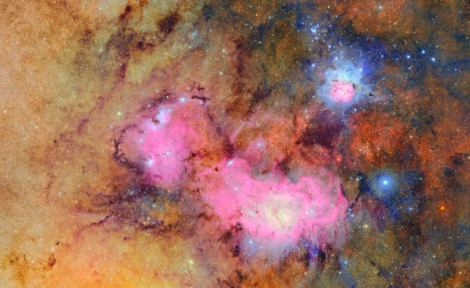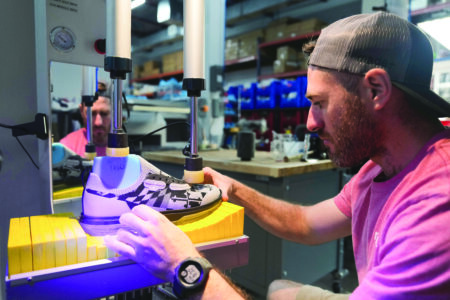Fun and learning with winter science
Snow provides many opportunities for families to have fun and learning time outside. Here are a few activities that follow STEM, or science, technology, engineering and math:
Examine Snow
Put a black piece of paper in the freezer overnight. Bundle up and take children outside. They can catch snowflakes on the cold paper and examine them with a magnifying glass. Can they find and count the six sides of a perfect hexagonal snowflake? Many snowflakes are damaged by wind or altered by temperature and humidity as they tumble to earth.
Observe Melting
Children can predict what will make ice melt the fastest on similar chunks of ice: salt, cold water, hot water, salt water, nothing in the sun or shade. Place the ice outside a window so children can check all day and make a time chart. They may come up with their own ideas. Sand? Black pieces of plastic? Glue?
Snow Measurement
Fill a bucket of snow to the top. Measure the snow with a ruler, yard or meter stick. Let them watch it through the day as it slowly shrinks away. Depending on the type of snow the usual ratio is 10 inches of snow equals 1 inch of water. Heavy packing snow could be 5 inches to 1 inch. Very dry cold dry snow could be 20 to 1. Then measure the water.
Pothole Science
Explain how road potholes are made.They are caused by the expansion and contraction of water after it has entered cracks in the pavement or small holes in gravel. When water freezes, it expands. Place water in a bowl and mark a line with a crayon. You can also use an ice cube tray filled with water or plastic bag. Place in a freezer. Guess how high the ice will be. Did the expansion burst the bag or overflow the tray? Frozen water is powerful. Are there any potholes in the neighborhood? Are they getting bigger as the water thaws and freezes? A practical application is to teach that it is unwise to place a completely filled water bottle in the freezer.
Igloos
You can talk about how igloos, “house” in Inuit, are made. Although historically igloos protected people in cold climates, few use them today. Igloo-shaped tents are popular though. Children can construct igloos with strips of newspaper dipped in ½ Elmer’s glue and ½ water wrapped around the top of a ball, dried and fashioned into an igloo for play figures.
Good books about igloos and Inuits include: “The Igloo” by Charlotte Yue; and “Immi’s Gift” by Karin Littlewood.
Children often want to dig out a snowbank to make an igloo. Snow forts with walls and no roof are probably safer and just as fun. For more, see grandparentsteachtoo.blogspot.com; wnmufm.org/Learning through the Seasons; Facebook and Pinterest.
EDITOR’S NOTE: Grandparents Teach, Too is a non-profit organization of elementary and preschool teachers from Marquette, Michigan. The writers include: Jan Sabin, Mary Davis, Jean Hetrick, Cheryl Anderegg, Esther Macalady, Colleen Walker, Fran Darling, and Iris Katers. Their mission since 2009 is to help parents, grandparents, and other caregivers of young children provide fun activities to help prepare young children for school and a life long love of learning. They are supported by Great Start, Parent Awareness of Michigan, the U.P. Association for the Education of Young Children, Northern Michigan School of Education, the Upper Peninsula Children’s Museum and the Northern Michigan University Center for Economic Education.





